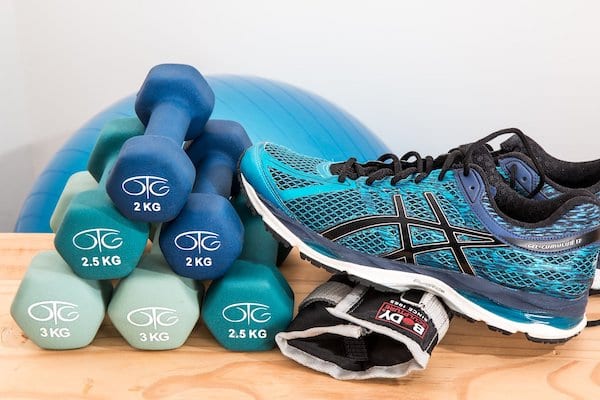What have you been doing this past year? Since March of 2020, I’ve connected with a group of older adults on Zoom twice a week to conduct a strength- building class. And as we’re getting closer to meeting in person again, I’ve reflected on the benefits these participants have reaped from months of this purposeful movement.
I’d like to stress again the importance of strength training/lifting weights/resistance training as we grow older. The following passages are excerpted from my book, Building Your Enduring Fitness.
Let’s discuss some of the common misconceptions and questions about building muscles as we age.
- I’m too old to gain muscle. With proper training, it’s possibleto gain muscle size and strength well into the eighth decade of life. Granted, it’s not a fast process. Working out twice a week, it will take 10-12 weeks to see results; that’s more time than it takes a younger person, but it’s still attainable. I’ve watched many clients in their seventies and eighties improve both upper and lower body strength while training with me. When beginning to lift weights, be patient and consistent, progressively increasing the amount of resistance.
- I’m a woman and I don’t want to get bulky muscles. Notto worry. Females don’t have enough muscle mass or tissue-building hormones for large, bulky muscles. But you can have strong muscles to help keep you safe and independent.
- I have muscle pain after lifting weights; isn’t that harmful? It’s perfectly normal to feel muscle pain a day or two after you exercise. It’s called DOMS (delayed-onset muscle soreness), and it’s caused by exercise-induced microscopic tears in muscle fibers. DOMS usually occurs when an individual begins strength training or increases the intensity/duration of the program. The pain will lessen in a few days. I always warn newcomers to my exercise classes about DOMS, and I encourage them to keep coming back despite the pain. It really does go away with time. Note: If you start to feel joint pain, something is wrong; change your exercise routine and see your doctor.
- I need special protein drinks to get more muscles. You doneed to eat enough protein to build and maintain muscle mass. While most Americans eat more than enough protein, some seniors don’t meet their needs. It’s important to get enough high-quality protein throughout the day.
- I walk. That’s all the exercise I need. Walking is an extremelyvaluable activity for folks as we age. But keep this in mind: Both muscle and bone mass decrease with age, and walking does not build muscle size for strong legs nor does it significantly strengthen bones. You must challenge muscles with resistance.
From our thirties on, we begin to lose 3-5 percent of our muscle mass per decade. That means sedentary adults can lose 15-25 percent of the total number of fibers in their muscles by the time they are eighty. This process is called sarcopenia, and it leads to loss of strength, balance, mobility, and independence.
Strength training, along with proper diet, is the only known intervention to protect against age-related muscle loss.
And as we lose muscle, our metabolism goes down. As a result, our bodies need fewer calories and we’re more likely to gain weight, especially excess body fat, unless caloric intake is reduced. So even if you happen to weigh the same at seventy as you did at twenty-five, if you haven’t lifted weights, you have a much higher proportion of body fat compared to muscle. Unfortunately, excess fat can lead to a multitude of health problems.
Think your muscles are still strong enough? Answer these questions related to everyday activities:
- Can you walk up and down a set of stairs?
- Can you get off a chair, sofa, or toilet without pushing with your hands?
- Sit on the floor, in the middle of a room. Pretend you’ve just fallen. Can you get up without the aid of a chair, sofa, bed, coffee table, or wall? This is something you may need to do at some point.
- Can you carry a bag of groceries?
- Do you lose your balance easily?
- Can you still manage your own luggage?
- Can you open heavy doors?
- Are you still able to play with your grandchildren?
In addition to maintaining independence and strength, weight training helps strengthen your bones, reduce your risk of falling, increase your metabolism, improve your body composition to less fat and more muscle, relieve pain from osteoarthritis and rheumatoid arthritis, and elevate mood.
BEST PRACTICES
Now it’s your turn. Ready to thumb your nose at Mother Nature? Don’t forget that in middle age and beyond, it’s imperative to start weightlifting safely. This is especially critical if you have been sedentary for many years, are a current or recent smoker, have a chronic disease (high blood pressure, diabetes, heart disease, arthritis, osteoporosis), or are overweight/obese
Get the approval of your healthcare provider, then look online for strength-building classes specifically for older adults, or check with your local YMCA, senior center, or community college when the world opens up again. Then do what you can to live a long, independent, and fun-filled life!
For tips on strength training, I’d love to talk with you!

